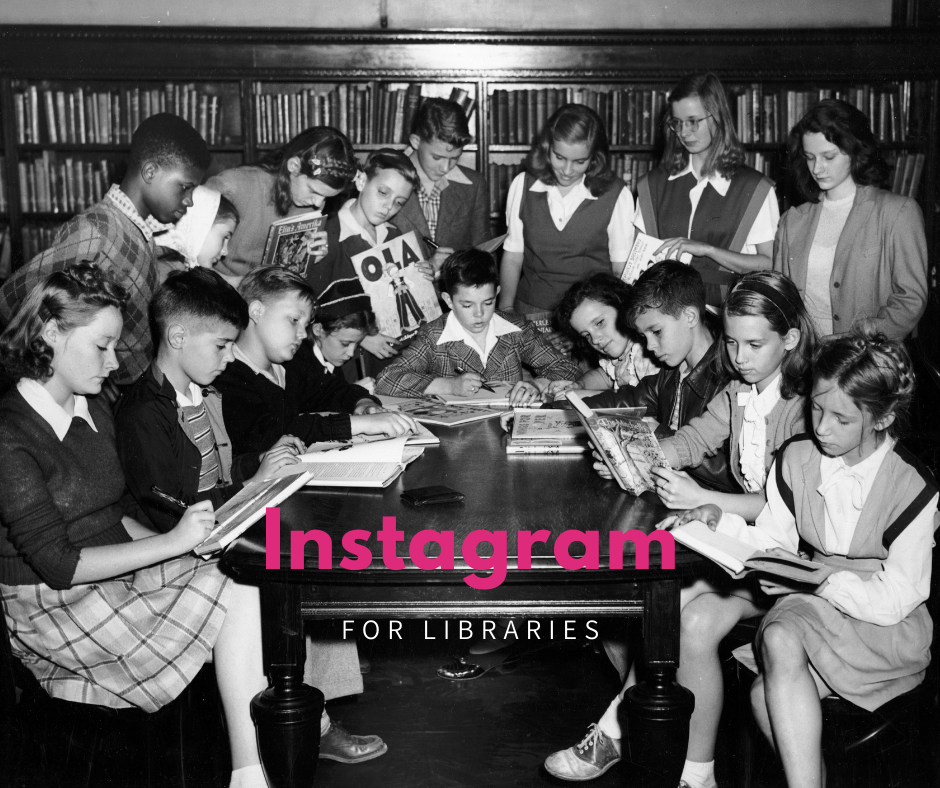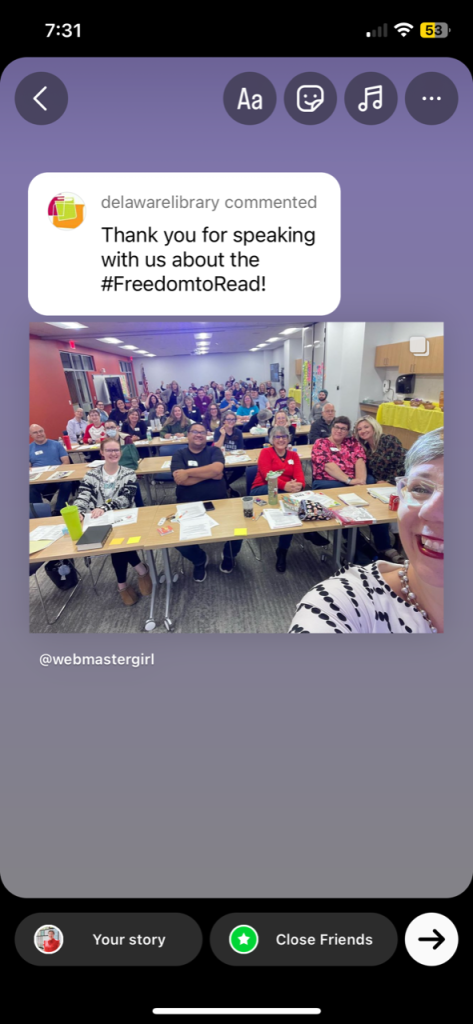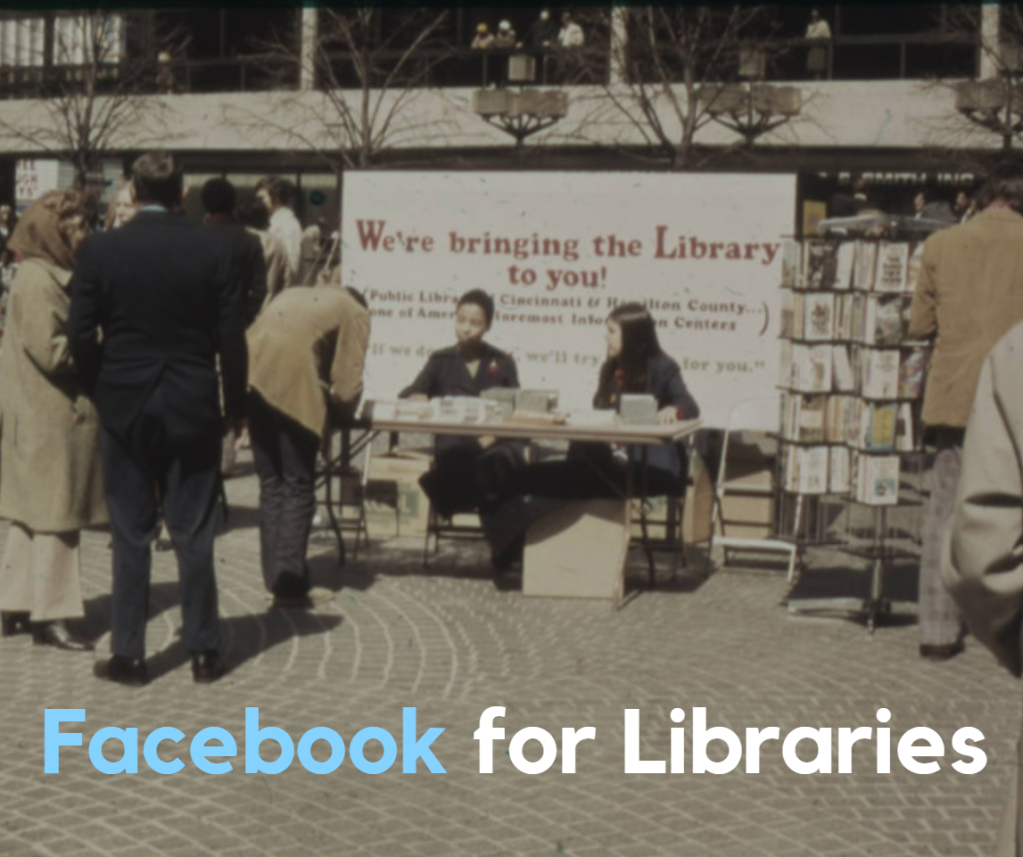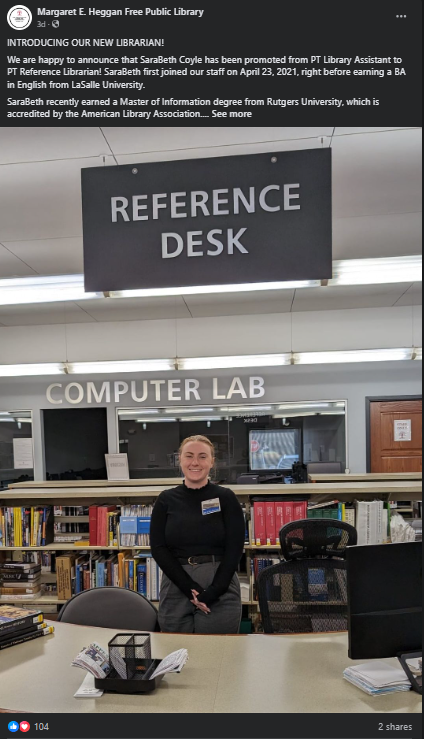
This is the second in the 2024 series of social media guides for libraries. It includes:
We’ll cover Twitter/X on Dec. 18. Stay tuned!
Instagram for libraries
Instagram is the second most popular social media platform for library marketing. 92 percent of libraries responding to the 2023 Super Library Marketing survey said they post to Instagram. That’s two positions higher than in 2022.
Instagram has 500 million daily active users, much fewer than Facebook. But use is growing worldwide.
As I mentioned last week, I believe the new focus on Instagram is due in part to the turmoil at Twitter/X.
How are people using Instagram right now?
Here are some statistics to consider as you plan your library’s Instagram use for 2024 according to SocialPilot.
- About 20 percent of all the active internet use in a day is spent on Instagram.
- The average Instagram user spends 30 minutes a day on the platform.
- 38 percent of users log onto Instagram multiple times per day.
- 70 percent of Instagram users watch Stories every day.
- Instagram users remain evenly split down gender lines.
- Instagram says they’ve seen an 80 percent increase in the time users watch videos on the platform over the last year.
How much success can we see on Instagram?
These engagement stats come from SocialPilot.
- The average engagement rate for all Instagram posts is 0.71 percent, significantly higher than Facebook.
- Carousel posts get the highest engagement rate at 1.26 percent.
- Instagram Reels posts get an average 1.23 percent engagement rate.
- Instagram Feed posts with just one photo get the lowest engagement rate at 0.59 percent.
- Engagement rates continue to be higher for Instagram accounts with fewer than 10,000 followers. So, once again, don’t worry AT ALL about your follower count.
The Instagram algorithm for 2024
According to Social Media Examiner, there are three separate but similar Instagram algorithms, depending on the type of content.
Instagram Feed ranking signals
- Past activity: Instagram will show your content to followers who have engaged with your posts in the past, especially in the recent past. It will also show your posts to people who have interacted with feed posts that are similar to yours. DMs, comments, likes, and shares all count toward the activity measure.
- The popularity of your library’s content on Instagram: If people have engaged with your recent posts, Instagram will show more of your content to more people.
Instagram Stories ranking signals
- Past activity overall: Instagram will offer your Stories to people who have viewed your Stories in the past or who have interacted with your Feed and Reels in the past.
- Engagement: Instagram will offer your Stories to a wide audience if your Stories tend to get lots of likes, comments, and shares.
Instagram Reels ranking signals
- Past user activity: Instagram pays attention to the topics a user loves on Reels. It will show your library’s Reels to people who have shown an interest in the topics you are posting.
- Reel statistics: Instagram likes new, popular videos. So, the older your Reel is, the lower the reach will be. If your videos are getting a lot of interaction soon after you post, your Reels will get more reach. Instagram also boosts videos that have a long watch time and reach more non-followers.
Here are four ways to boost the reach of your library’s Instagram account in 2024.
Think carefully about whether to post on the Feed, Stories, or Reels.
Because the ranking signals are different for these different sections of Instagram, libraries need to do a little more strategic thinking about which Instagram area will give them the best return on their investment of time and money. How do you know which to choose?
If your overarching goal for using Instagram is to reach more people and build brand awareness for your library, focus on posting to Reels. Instagram will randomly show Reels to users for days or weeks after they’ve been created. Also, Reels published on Instagram can pop up in the Reels feed on Facebook. So, for long-tail goals, Reels are worth your time.
If you are talking about specific library services, promoting an event or class, or sharing partner content or user-generated content, post to Stories. Stories disappear after 24 hours, so they’re not the best method for spreading the word about evergreen library offerings. They are great, however, because you can add a link to a story, and, as mentioned above, most Instagram users look at Stories every day. That makes Stories the best real estate for things you absolutely need people to know.
If you are sharing information about evergreen content, like your collection, your Library of Things, cool things you can make in the Makerspace, and big programs like Winter and Summer Reading, post to the Feed. Engagement statistics show that the best Feed posts are carousel posts of aesthetically pleasing photos—not graphics with text. If you have information to share, put it into the captain rather than on a graphic. And share as many photos as you can in the post—you can add up to 10 for a carousel.
Concentrate on interaction to boost engagement.
The algorithm will give you more reach if you can get your followers to comment, like, and share your posts on Stories, the Feed, and Reels. Building engagement takes time but the easiest way to do it is to start conversations and respond to comments.
To start conversations, you can ask questions, including trivia questions, of your followers. Or create quizzes or polls about the library. It’s fun, and it gets followers to stop scrolling and interact with your content.
Also, try responding to every comment for a month. I know this will be a lot for small libraries, but the effort is worth the time. Responding to comments is one of the best ways to boost engagement stats. And your followers will love the attention.
Experiment with different types of content.
The Instagram algorithm is ever-changing. So, the formula you used for success in 2023 likely won’t work in 2024.
You should view your Instagram as one, ongoing experiment. Remember, you’re trying to boost engagement because that’s a strong ranking signal. So, spend 2024 testing new formats. Use Instagram’s in-app creative tools to help make your creation easy and fun, and to show Instagram you care about the platform.
Test out different topics, like history or new books in your collection to see how your audience responds. You can also test new ways to present the topics your followers already love.
Be checking your insights as often as possible to give you clues about what you should post next.
Get super strategic about hashtags.
Hashtags help the algorithm to understand what your content is about. So, choosing the right hashtags will improve your ranking and visibility on the platform. Here are three tips for managing Instagram hashtags for your library.
- Create ONE library-specific hashtag: Create a unique hashtag for your library and encourage your followers to use it when sharing or commenting on your content. This helps to build recognition of your library’s brand and makes it easier for others to discover your content.
- Use a mix of hashtags: Mix and match your hashtags, using a combination of popular (#SummerReading, #LibraryLove) and niche hashtags (#BestLibraryBooks, #MakerSpaceCreations). But…
- Limit the number of hashtags: Instagram allows you to use up to 30 hashtags per post, but I honestly believe that’s too many. It looks spammy and it could make your posts seem lower quality. Try to limit yourself to 2-5 hashtags per Feed post and Reel, and one hashtag per Story.
Maybe also try…
Sharing comments from your posts to your Stories: Instagram now allows you to share comments from any public post or Reel to your Instagram Story.
When you swipe left on a comment, you’ll see a new option to share it in your story, indicated by a plus sign. The comment will then be featured in a new sticker type, which you can place anywhere within the story frame. It’s a great way to highlight patrons and demonstrate social proof.
When to post on Instagram
Post on Instagram Stories every day.
Post to the Instagram Feed and Instagram Reels two to three times a week.
The experts agree that engagement is highest on weekdays between 9 a.m. and 1 p.m. Take a break on Saturday: that’s the day with the lowest engagement. If you wish to post on Sunday, wait until the evening, after 7 p.m.
But as always, check the insights on your library’s account. Post when you notice your followers are engaging most often with your content. And remember that being consistent is key. Pick a schedule that your library staff can stick to.
Special message for Indiana libraries
P.S. Want more help?
Subscribe to this blog and you’ll receive an email whenever I post. To do that, enter your email address and click on the “Follow” button in the lower left-hand corner of the page. You can also follow me on the following social media platforms:








